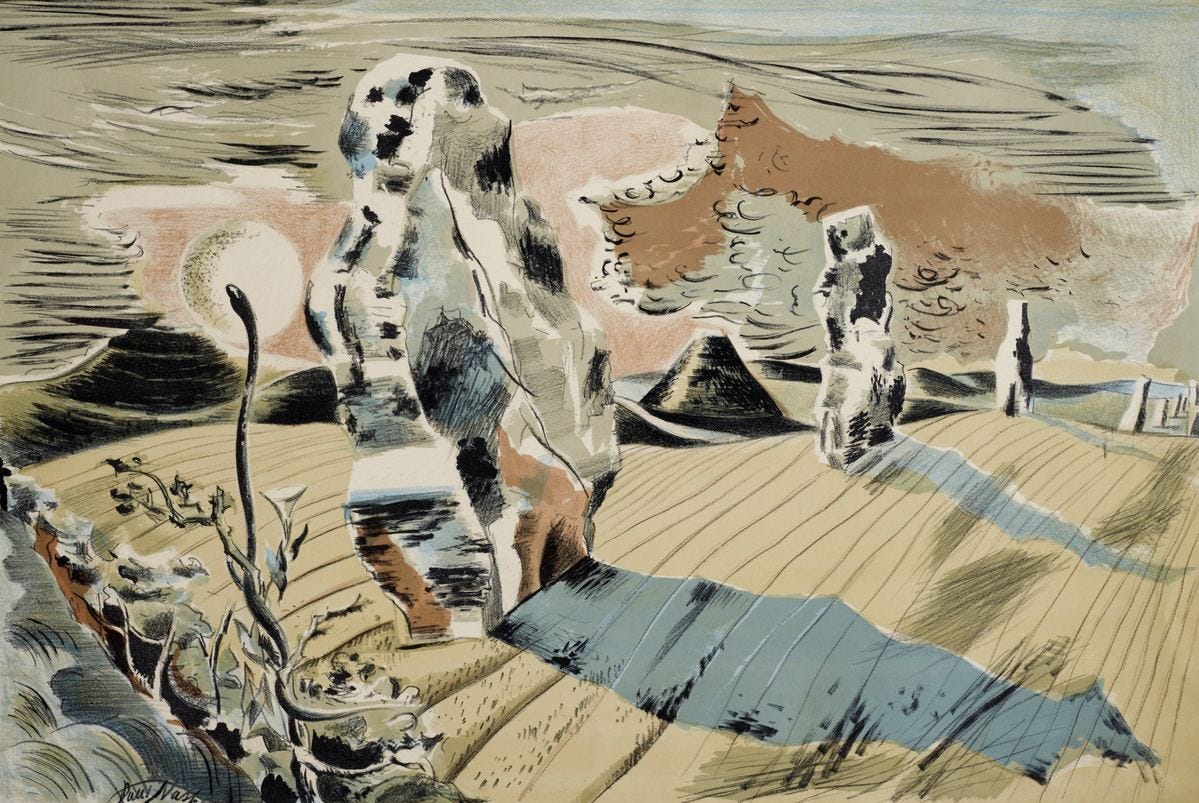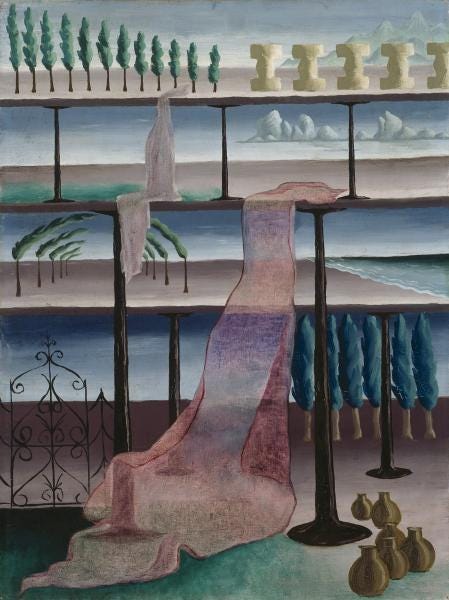Surrealist Gardens
While surrealist art excels in the freedom offered by the canvas, it can also flourish in the physical world, transforming gardens into immersive, dreamlike realms that invite viewers to step beyond the ordinary.
The Surrealist art movement explores the unconscious mind and challenges traditional views of reality. Artists such as Salvador Dalí, René Magritte, and Max Ernst exploit imagery to blur the lines between dreams and reality. Their paintings feature complex symbols, unusual combinations, and imaginative landscapes. All of which makes viewers question what is real and imagined. Surrealist artists can express these ideas powerfully on canvas, while real-life art-forms can be more challenging.
The creative ideas in surrealism can go beyond painting and influence garden design. By using surreal concepts in outdoor spaces, designers can create areas that inspire wonder and confusion. This allows visitors to feel like they are stepping into a living dream.

While surrealist art excels in the freedom the canvas offers, it can also flourish in the physical world, transforming gardens into immersive, dreamlike realms that invite viewers to step beyond the ordinary.
Let's look at some examples of gardens designed by Surrealists.
Salvador Dali
Salvador Dalí was known for his surreal and eccentric approach to art, and his art extended to landscapes and gardens. His most notable garden designs are at Portlligat and Púbol Castle:
Portlligat House (Casa de Salvador Dalí, Portlligat)
This was Dalí’s main residence for much of his life, and he designed the garden surrounding the house. Situated in the village of Portlligat on the Costa Brava in Spain, the garden features winding pathways, sculptures, and strategically placed olive trees. Dalí's surrealistic touch is evident in the garden's unique design elements, such as giant eggs, sculptures of mythological creatures, and bizarre objects like a swimming pool shaped like a phallus. It’s an intimate garden, not sprawling, but intentionally curated to complement the architecture and the surreal environment.

Púbol Castle (Castell Gala Dalí de Púbol)
Dalí purchased the castle for his wife, Gala, and it became her retreat. The gardens here are more extensive than at Portlligat, surrounded by tall cypress trees, creating an almost Gothic feel. Dalí integrated sculptures and fountains into the landscape, including iconic sculptures of elephants with long, stilt-like legs. These elephants are a recurring motif in all his work.
There’s a sense of mystery and romantic decay, reflecting Gala’s influence and Dalí’s creative vision. Púbol was refurbished by Dali for the sole use of his wife. Dali agreed not to visit The Castle when Gala was residing there without getting advance permission from her in writing.
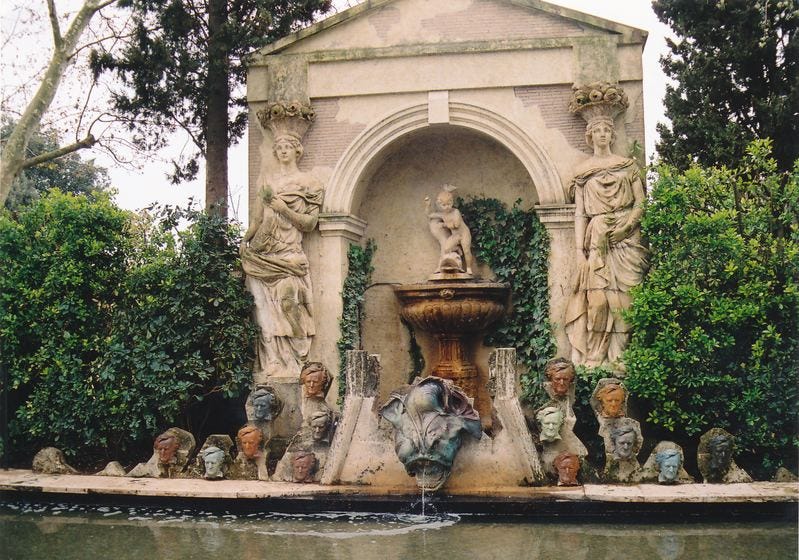
These gardens are not typical by classical standards but instead embody Dalí’s surreal artistic expression and personal symbolism. They are a part of his broader creative vision, blending art and nature into dreamlike landscapes.
4 Lesser-Known Surrealist Garden Designers
While Dali is the most noteworthy garden designer of the Surrealist movement, there are other surrealist-led garden designs. Here are 4 more artists and figures involved in creating gardens or landscapes with surrealist themes:
1. Jean Cocteau – Gardens of Villa Santo Sospir:
Jean Cocteau, the multi-talented French artist, writer, and filmmaker, designed and adorned Villa Santo Sospir in Saint-Jean-Cap-Ferrat, France. Although Cocteau didn’t create an elaborate garden, he adorned the villa and its surroundings with murals, mosaics, and surreal motifs, creating a dreamlike space. The property includes whimsical elements like Cocteau’s murals and outdoor decor, which blend harmoniously with the Mediterranean garden.
2. Leonora Carrington – The Edward James Gardens at Las Pozas:
Leonora Carrington, a British-born Mexican surrealist, collaborated with Edward James to help inspire Las Pozas, a surrealist garden in Xilitla, Mexico. Although Edward James primarily designed and funded the garden, Carrington’s friendship with him and her influence can be seen in some of the garden’s surreal and magical elements. Las Pozas consists of surreal concrete sculptures, stairways leading to nowhere, and fantastical structures amidst the lush jungle setting, creating a surreal dreamscape.
James passed away before the landscape could be completed, leaving many works unfinished in the gardens. The unfinished nature of the sculptures and structures that it feels like a surreal Mayan ruin in the Mexican jungle.
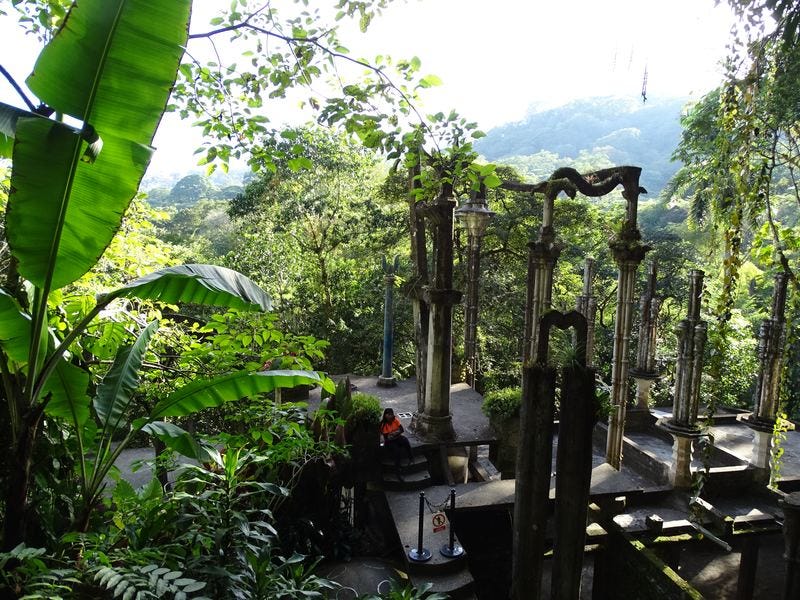
Max Ernst, one of the founders of surrealism, contributed to a surrealist landscape in Sedona, Arizona, where he lived with his wife, Dorothea Tanning. Ernst and Tanning created an outdoor garden filled with surreal sculptures, blending their art with the natural desert landscape.
The sculptures, shaped like totems, figures, and abstract forms, appear almost as if they are growing out of the ground, enhancing the surreal connection between art and nature.
4. Niki de Saint Phalle – The Tarot Garden (Il Giardino dei Tarocchi) in Italy:
Niki de Saint Phalle, a French-American artist, created The Tarot Garden in Tuscany, Italy. The garden is inspired by tarot card imagery and features large, vibrantly colored sculptures representing different tarot cards. The entire garden is an immersive surreal experience, with monumental figures, mosaic walkways, and other whimsical structures that evoke a sense of being inside a dream.
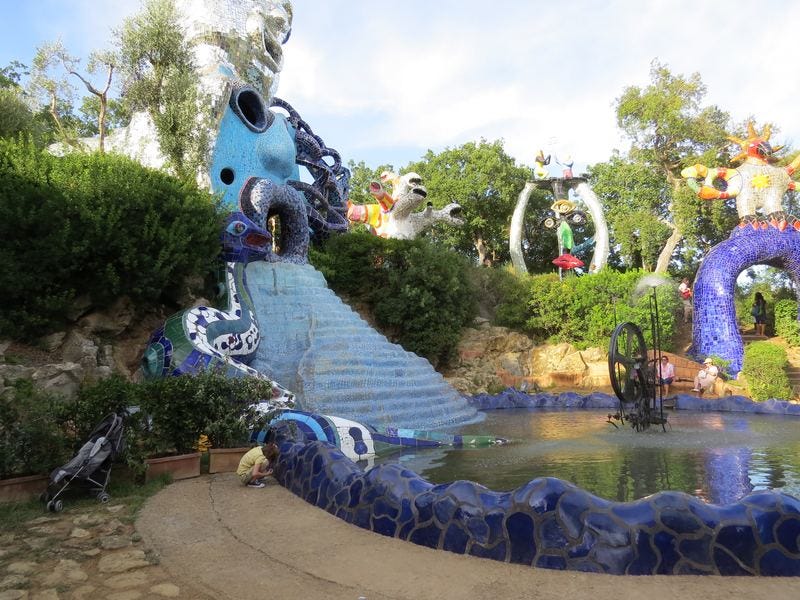
These gardens, like Dalí’s, are not merely spaces with plants but immersive experiences that challenge the viewers’ perceptions of reality. They invite contemplation, mystery, and imagination, blending the natural and the surreal.


